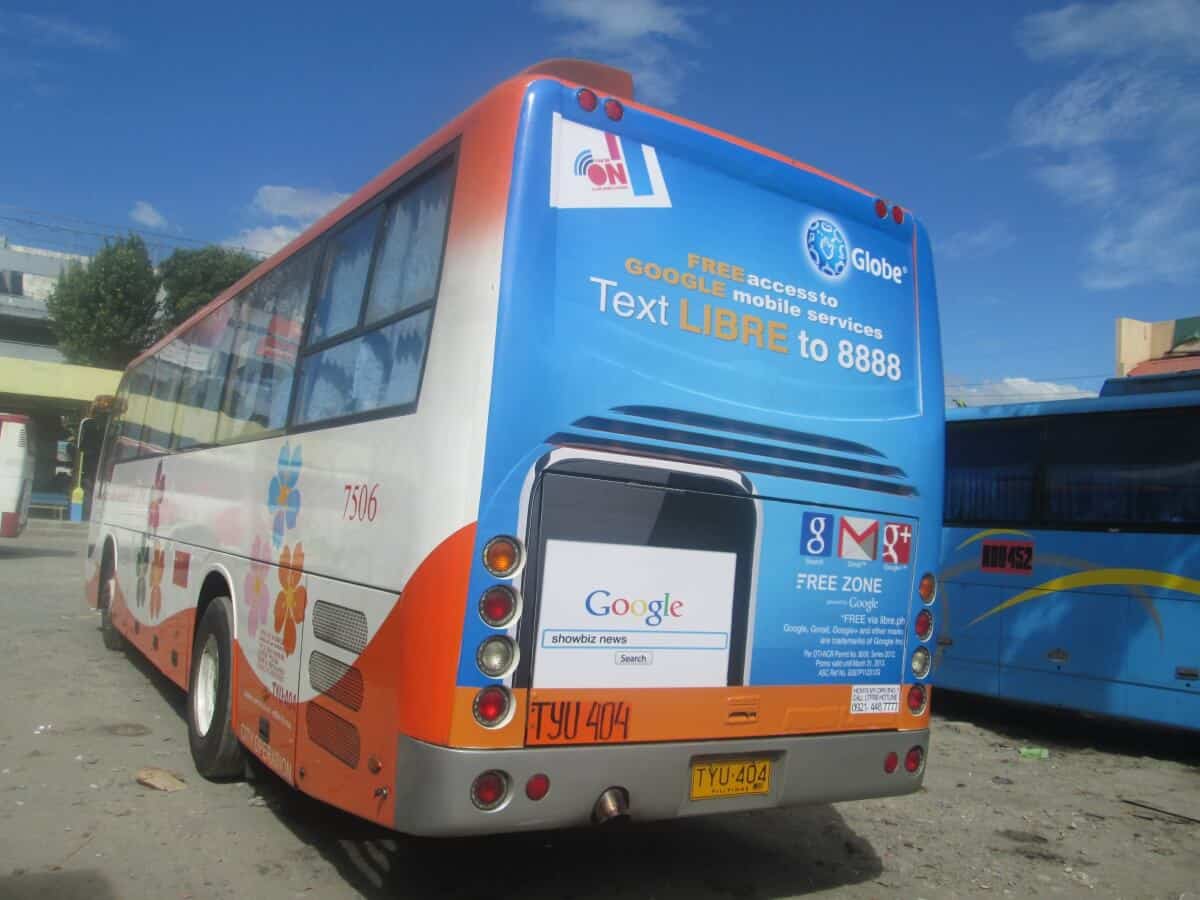Understanding the Role of Transportation Marketing in Enhancing Brand Name Presence and Consumer Interaction
Transit advertising has emerged as a critical element in the advertising and marketing landscape, providing distinct opportunities for brands to raise their exposure and involve customers properly. With the capability to reach a varied and restricted target market throughout their daily commutes, these advertising techniques are not merely concerning exposure; they have to do with creating purposeful connections with possible clients. As we discover the complex benefits and innovative approaches within transit marketing, it comes to be important to consider how these elements collectively affect customer assumption and habits, questioning regarding their long-term effect on brand name loyalty.
Meaning of Transit Marketing
Transit advertising and marketing describes the method of advertising products, solutions, or brands via promotions put in and around mass transit systems. This kind of advertising and marketing encompasses a selection of placements, including posters on trains and buses, electronic screens at transit terminals, and wraps on the outside of automobiles. It aims to reach a varied target market, taking advantage of on the high foot traffic associated with public transportation.
Transportation advertising and marketing is tactically positioned to record the focus of travelers, that typically spend substantial time waiting or traveling. By integrating ads into the everyday routines of individuals, brand names can create a long-term impact and foster brand name recognition. The medium is especially efficient in urban atmospheres, where mass transit is a main mode of traveling.
Additionally, transit advertising can facilitate local targeting, allowing businesses to get to specific demographics based upon transportation courses and terminal locations. As urban populaces grow and using public transportation increases, this marketing technique has actually acquired importance as a vital component of incorporated advertising and marketing approaches. The dynamic nature of transit advertising, combined with its capability to engage customers in a captive environment, emphasizes its relevance in modern advertising and marketing methods.
Benefits of Transit Advertising
The effectiveness of transit advertising exists in its capacity to deliver a multitude of advantages to brands looking for to improve visibility and interaction. Among the main benefits is the comprehensive reach it provides; transportation advertisements can properly target varied demographics throughout city locations, getting to both pedestrians and commuters alike. This broad direct exposure substantially boosts brand name understanding.
Another advantage is the high frequency of impacts. As transit cars travel along recognized paths and stop at numerous places, they create repetitive exposure that enhances brand messages. This frequency promotes experience, which is critical in consumer decision-making.
Transit advertising and marketing is additionally cost-efficient contrasted to other media platforms. Provided its extensive reach and capacity for high impressions, brands often experience a lower cost per thousand perceptions (CPM), maximizing their advertising and marketing spending plan.
Additionally, transportation advertisements can produce a feeling of neighborhood link. By straightening with local transit systems, brands can resonate with local target markets and promote a feeling of local satisfaction. This localized method enhances brand name commitment and involvement, making transit advertising an engaging option for organizations intending to solidify their presence out there.

Reliable Methods for Transportation Campaigns
To make best use of the impact of transportation campaigns, brands must utilize critical planning and execution tailored to their target audience. Initially, recognizing the group characteristics of the audience using public transportation is important. This allows brand names to develop tailored messaging that resonates with potential customers.
Following, selecting the best transportation mediums is crucial. Whether utilizing bus covers, subway posters, or digital screens, each tool has distinct benefits that can boost presence. For instance, vivid visuals on bus covers can attract attention, while electronic advertisements can be updated regularly to show timely promos.
Additionally, incorporating a cohesive branding technique throughout transportation platforms guarantees uniformity and strengthens the brand name's identity. Utilizing memorable taglines and distinctive layouts will reinforce brand recall among commuters.
By utilizing these techniques, brands can efficiently harness the possibility of transportation marketing, promoting higher understanding and link with their target audience. Ultimately, a well-executed transit campaign can drive significant growth in brand name exposure and customer engagement.

Gauging Influence and Interaction
In assessing the performance of transit advertising and marketing projects, precise measurement of effect and involvement is crucial for brand names looking for to enhance their advertising techniques. Metrics such as reach, regularity, and perceptions supply fundamental information to analyze exposure. Examining these elements helps figure out the amount of potential customers are revealed to the promotions during their day-to-day commutes.
Interaction can be further assessed via customer communications, such as web site web traffic, social media points out, and direct actions to calls-to-action included in the ads. Utilizing tools like QR codes or special Links can help with monitoring of consumer habits directly connected to transit campaigns. Surveys and responses systems likewise offer as important techniques to collect qualitative information on customer understandings and recall of the advertisement.
Furthermore, progressed analytics and attribution models can associate transit exposure with succeeding buying habits, using understandings into the roi. By employing a detailed strategy that incorporates qualitative and quantitative steps, brand names can develop a nuanced understanding of their transit advertising and marketing influence. Eventually, this data-driven technique makes it possible for brand names to improve their campaigns, guaranteeing they reverberate effectively with target market and boost total brand presence.
Instance Research Studies of Successful Campaigns
Successful transportation marketing campaign work as engaging Source examples of just how reliable techniques can elevate brand name visibility and engagement. Transit Advertising Philippines. One significant instance is the "I Love New York" project, which transformed the city's image and attracted countless vacationers. By using subway advertisements, signboards, and bus wraps, the project created a solid, natural brand identity, resulting you can try this out in a significant uptick in tourism and regional service patronage
An additional exemplary campaign is Coca-Cola's "Share a Coke" initiative, which leveraged transit advertising and marketing to customize the brand experience. By featuring popular names on advertising products across different transportation platforms, Coca-Cola promoted a deeper emotional connection with consumers, urging them to share their experiences on social media.
In addition, the "Got Milk?" project efficiently utilized mass transit advertisements to get to a wide target market, enhancing the message of the importance of milk in a balanced diet. The campaign saw a quantifiable rise in milk consumption in target demographics.
These study highlight that when performed thoughtfully, transit advertising can dramatically improve brand name visibility, foster consumer involvement, and drive quantifiable outcomes, demonstrating its crucial duty in modern-day marketing techniques. - Transit Advertising Philippines
Conclusion
Finally, transit advertising and marketing works as an important device for boosting brand visibility and fostering customer interaction. By using strategically put promotions within public transport systems, brands can successfully strengthen and reach varied target markets recognition via consistent direct exposure. The execution of targeted messaging and ingenious strategies better magnifies the influence of transportation campaigns. Eventually, the ability to determine involvement and evaluate effective situation studies emphasizes the effectiveness of transportation marketing in driving brand loyalty and customer interactions.
Transit marketing has emerged as a pivotal element in the advertising landscape, providing special chances for click to find out more brands to raise their visibility and engage customers properly.In addition, transportation marketing can help with local targeting, permitting organizations to get to particular demographics based on transit routes and station areas.In examining the performance of transportation advertising and marketing projects, exact dimension of influence and interaction is vital for brand names looking for to optimize their advertising approaches.Effective transportation marketing projects serve as engaging examples of just how efficient approaches can raise brand name visibility and engagement.In verdict, transit advertising and marketing offers as an essential device for enhancing brand name presence and fostering consumer interaction.